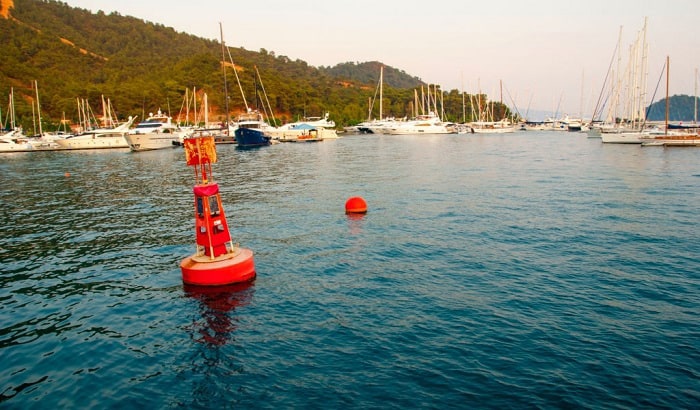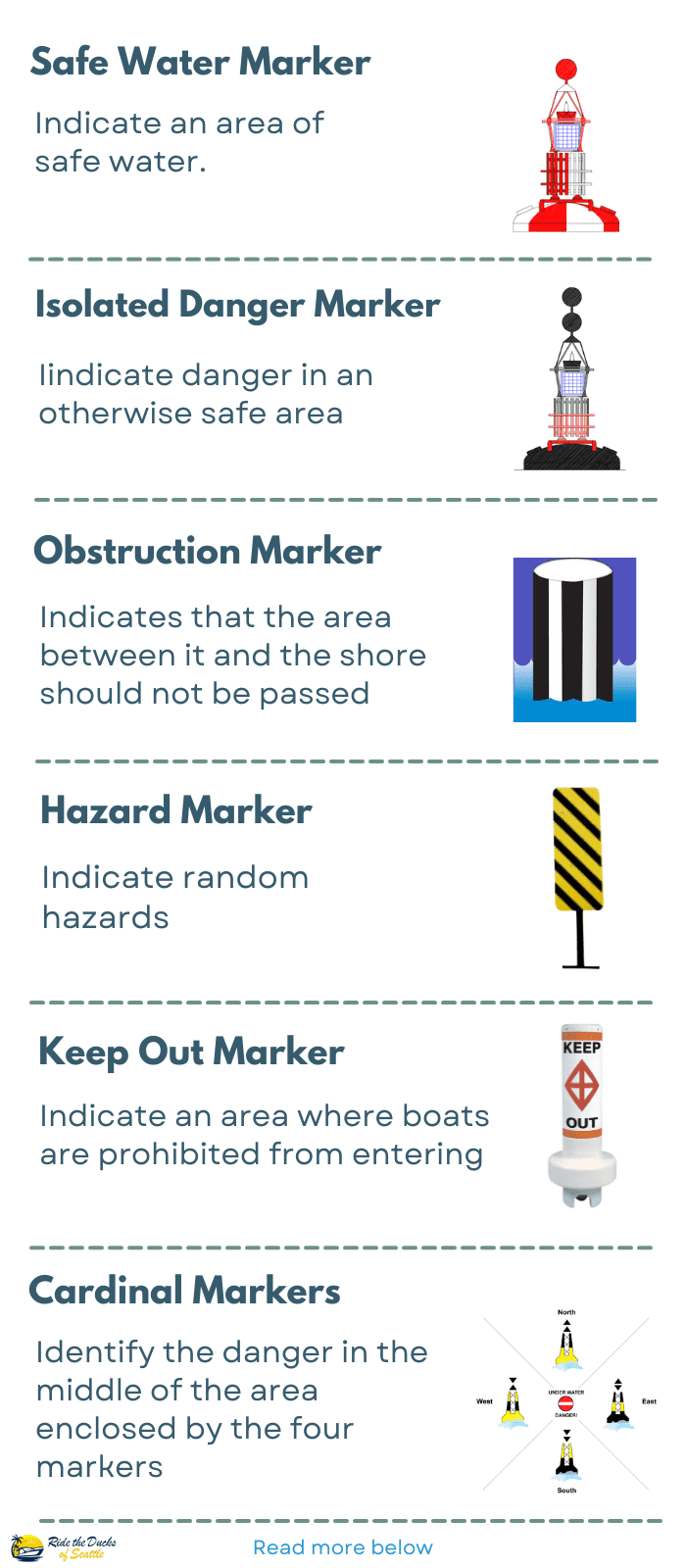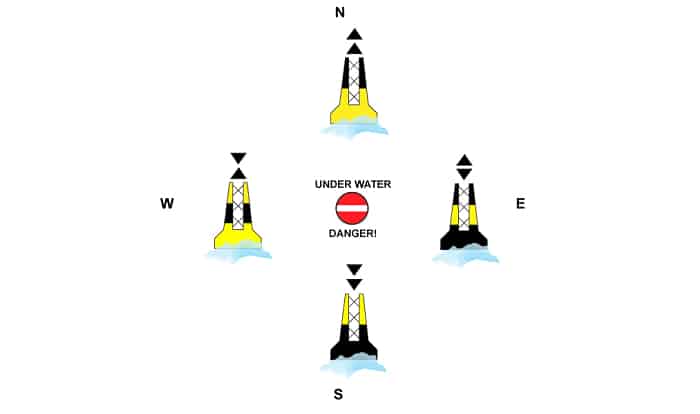- Safe Water Marker – white body with red stripes
- Danger Water Marker – black body with red stripes
- Obstruction Marker – white body with black stripes
Safety is of paramount importance when you are out on the water, and this is especially true when you are sailing on a boat. Among the tools to keep us safe are water markers, and among them, none are more obvious for safety than the safe water marker.
But what color are safe water markers and how do we know what they are? We’ll discuss these along with other water markers that help keep us safe on the water. Keep reading to stay safe.
Table of Contents
Water Markers
As mentioned earlier, water markers are tools we use to help keep us safe when out on the water. They function by indicating certain types of information for us, and different water markers convey different types of information.
In addition to the color of safe water markers, we will also take a look at some other safety-oriented water markers that function similarly to safe water markers.
Safe Water Markers Color
Markers below are those that help keep us on safe water, though this is not a complete list.
Safe Water Marker
The safe water marker is a marker, usually a buoy, that serves to indicate an area of safe water. This means that all sides of the marker are unobstructed and may be passed by vessels. Also called the fairway buoy.
To find this type of marker, look for a white marker with red vertical stripes. They are rather easy to spot, and can usually be found on fairways marking the midpoint of water channels.
Isolated Danger Marker
These markers indicate danger in an otherwise safe area. They are usually placed right on top of the danger, commonly a rock or a shipwreck. If they are not exactly on top of the dangerous element, they will be very close to it.
These markers can be identified by their color, they are black with red horizontal lines or just black and red. You may think of them as the opposite of safe water markers color. These markers may also have lights on top, and if they do, the light will be white.
Obstruction Marker
This marker is white with black vertical lines. It is placed in an area near the shore. This marker indicates that the area between it and the shore should not be passed.
This is possibly due to the presence of an object under the water that may cause problems for your vessel. Just think of it as a warning that something will obstruct your path, hence the name.
Hazard Marker
These markers indicate random hazards. Such hazards include but are not limited to: rocks, shallow water, and shoal. If you see these markers or buoys, take heed and carefully leave the area.
These hazard markers can be identified by their white color, as with many informational non-lateral markers. Specific to these markers is their orange diamond marking on each side. They also have two orange horizontal bands, above and below the orange diamond mark.
Keep Out Marker
The keep-out marker is a water marker that is very simple to follow, as the name implies. It serves to indicate an area where boats are prohibited from entering.
These markers look very similar to hazard markers with their white body, orange diamond, and orange horizontal bands on top and at the bottom. The key differences are the orange cross in the middle of the diamond, and the word printed on it.
The word indicates what is ahead, which makes it easy to understand why boats are prohibited in the area. Some examples are a dam or a swimming area.
Cardinal Markers
Cardinal markers come in a set of four, and all of them look pretty similar to one another. They function by identifying the danger that is located in the middle of the area enclosed by the four markers.
All of them are black and yellow and have a pair of triangles on top; one triangle above the other. Each marker is distinct from all others with the color patterns and combination of regular and inverted triangles setting them apart from one another.
These cardinal markers represent four directions: north, south, east, and west. The directions they represent correspond with the direction of safe water. For example, safe water can be found north of the north cardinal marker. On the other hand, safe water is located south of the south cardinal marker.
- A. North – It has a black upper half and yellow lower half with two triangles on top.
- B. South – Yellow upper half, black lower half, and two inverted triangles on top.
- C. East – Black-colored top and bottom with yellow mid-section. The inverted triangle below the regular one, making a diamond shape split in the middle.
- D. West – Yellow top and bottom with a black mid-section. The inverted triangle is above the regular one.
Additional info
- Lateral water markers allow us to identify areas for safe passage and assist with navigation. Non-lateral water markers, on the other hand, inform us of important details about the surrounding area or the water where the marker is located.
- Among non-lateral water markers, the safe water marker is especially inclined toward safety, as the name implies.
Important reminders
- Remember that not all dangerous or hazard-prone areas are marked. If you run aground in supposedly safe water or experience some difficulty moving the boat, do not shrug it off. Always proceed with caution in this sort of situation. Check this tutorial to find the best way to avoid this situation!
- If you are unsure of an area’s safety, do not take a risk. Try to find a secure path instead. It is always better to err on the side of caution than be involved in a fatal accident.
- There are many water markers. You may not need to know all of them, but the more of them you know the better. If you can know them all, that is best.
Conclusion
That concludes our short guide about safe water markers and other safety-oriented markers. Now you know the answer to the question “what color are safe water markers?” along with other essential information to help keep you and your boat safe.
We hope you found this guide useful, and if you did, please share it with others. You can also leave your comments and suggestions about this guide below.
That’s it for now. Remember to always keep safety a priority.

I am passionate about water sports and technical fields, so combining both makes me interested in making contents about boat accessories. With my partner, we went on many trips and sports games together, which led us to think about how we can spread our joys and passions to many people.




